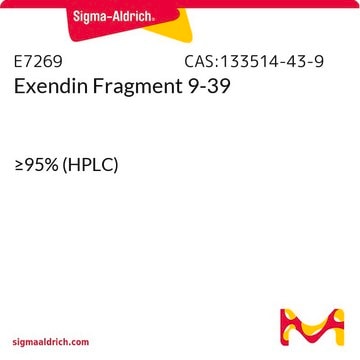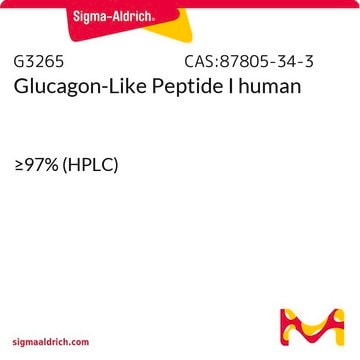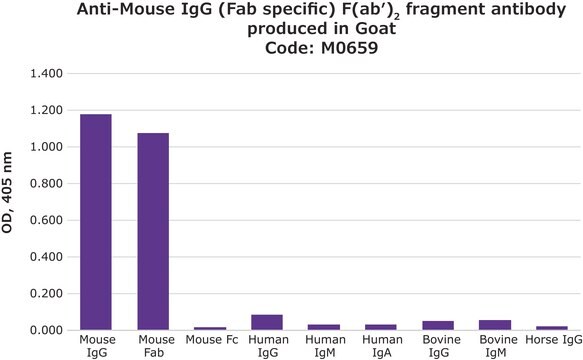F2772
Anti-Mouse IgG (Fc specific) F(ab′)2 fragment−FITC antibody produced in goat
flow cytometry grade, affinity isolated antibody, buffered aqueous solution
About This Item
Recommended Products
biological source
goat
conjugate
FITC conjugate
antibody form
affinity isolated antibody
antibody product type
secondary antibodies
grade
flow cytometry grade
clone
polyclonal
form
buffered aqueous solution
storage condition
protect from light
technique(s)
flow cytometry: 1:100
immunohistochemistry (formalin-fixed, paraffin-embedded sections): 1:160
storage temp.
−20°C
target post-translational modification
unmodified
Looking for similar products? Visit Product Comparison Guide
General description
Fluorescein isothiocyanate (FITC) is a fluorescein derivative (fluorochrome) used to tag antibodies, including secondary antibodies, for use in fluorescence-based assays and procedures. FITC excites at 495 nm and emits at 521 nm.
Anti-mouse IgG is conjugated to Fluorescein Isothiocyanate (FITC), Isomer I. The F(ab′)2 antibodies isolated from goat antiserum by affinity chromatography, react specifically with mouse IgG Fc; does not bind other mouse Igs. No cross reaction is observed with mouse Fab fragment. The antibody shows minimal cross reaction with human, horse and bovine proteins on tissue or cell preparations.
Specificity
Immunogen
Application
- flow cytometry for labelling of human peripheral blood lymphocytes (dilution of 1:100) and label human polymorphonuclear cells (PMNs) (dilution of 1:50).
- immunocytochemistry using human embryonic stem cells
- immunohistochemistry at a working dilution of 1:160.
Immunohistology: A minimum dilution of 1:160 is determined by indirect immunofluorescence on formalinfixed, and paraffin-embedded human tonsil using mouse monoclonal anti-human IgG as the primary antibody.
Biochem/physiol Actions
Other Notes
Physical form
Preparation Note
Useful when trying to avoid background staining due to the presence of Fc receptors.
Disclaimer
Not finding the right product?
Try our Product Selector Tool.
Storage Class Code
10 - Combustible liquids
WGK
nwg
Flash Point(F)
Not applicable
Flash Point(C)
Not applicable
Personal Protective Equipment
Certificates of Analysis (COA)
Search for Certificates of Analysis (COA) by entering the products Lot/Batch Number. Lot and Batch Numbers can be found on a product’s label following the words ‘Lot’ or ‘Batch’.
Already Own This Product?
Find documentation for the products that you have recently purchased in the Document Library.
Customers Also Viewed
Our team of scientists has experience in all areas of research including Life Science, Material Science, Chemical Synthesis, Chromatography, Analytical and many others.
Contact Technical Service








